Discovering the Triad T2556
Part One of a Series on the Triad T2556
This is a story about my adventures with the Triad T2556, a super obscure piece of vintage technology from the 1980s.
You may or may not know that I collect vintage computers, primarily from the 1980s, but anything that I can afford that has a sense of style and character is a candidate. So. Computers from Atari or Commodore are worthy, but a 80x86 PC is not. Also, the BBC Micro will always be awesome.
This series will be very different to the stuff that I normally write about, but — as always — I’m glad for feedback and questions. Also, if you’re familiar with this machine or can provide additional insights, then I’d love to hear from you.
Almost exactly two years ago, I stumbled upon something remarkable on EBay. Remarkable in this context means that it was something that had that sense of elegance and uniqueness that I’ve been looking for.
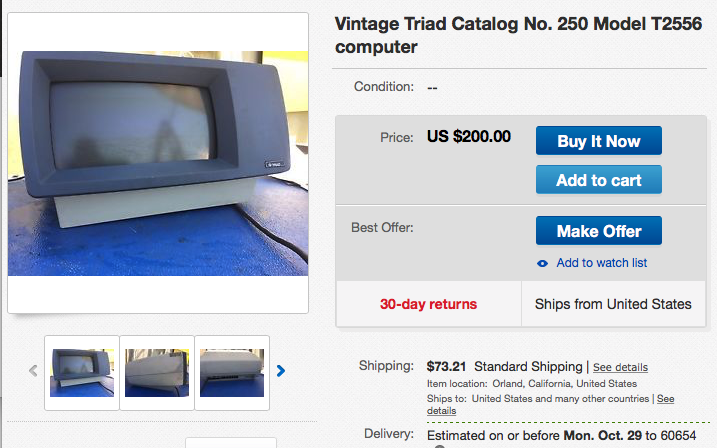 A later post from the same seller on EBay
A later post from the same seller on EBay
I searched Google, and whereas there are a few hints, like this hardly dated at all video for a later version of the system, I found absolutely no detail about it.
All I knew was that it was a point of sale system provided to automotive parts stores. I suppose I could reach out to the address for Triad Systems Corp in Livermore, but… introvert. Besides, that would spoil the challenge.
The thing cost $70 plus shipping, so what could go wrong? Worst comes to the worst, I can strip the thing down and stick a Raspberry Pi in there or something.
After a lot of deliberation, and self-inflicted cries of do you really need that, Alex?, I shelled out and bought the thing.
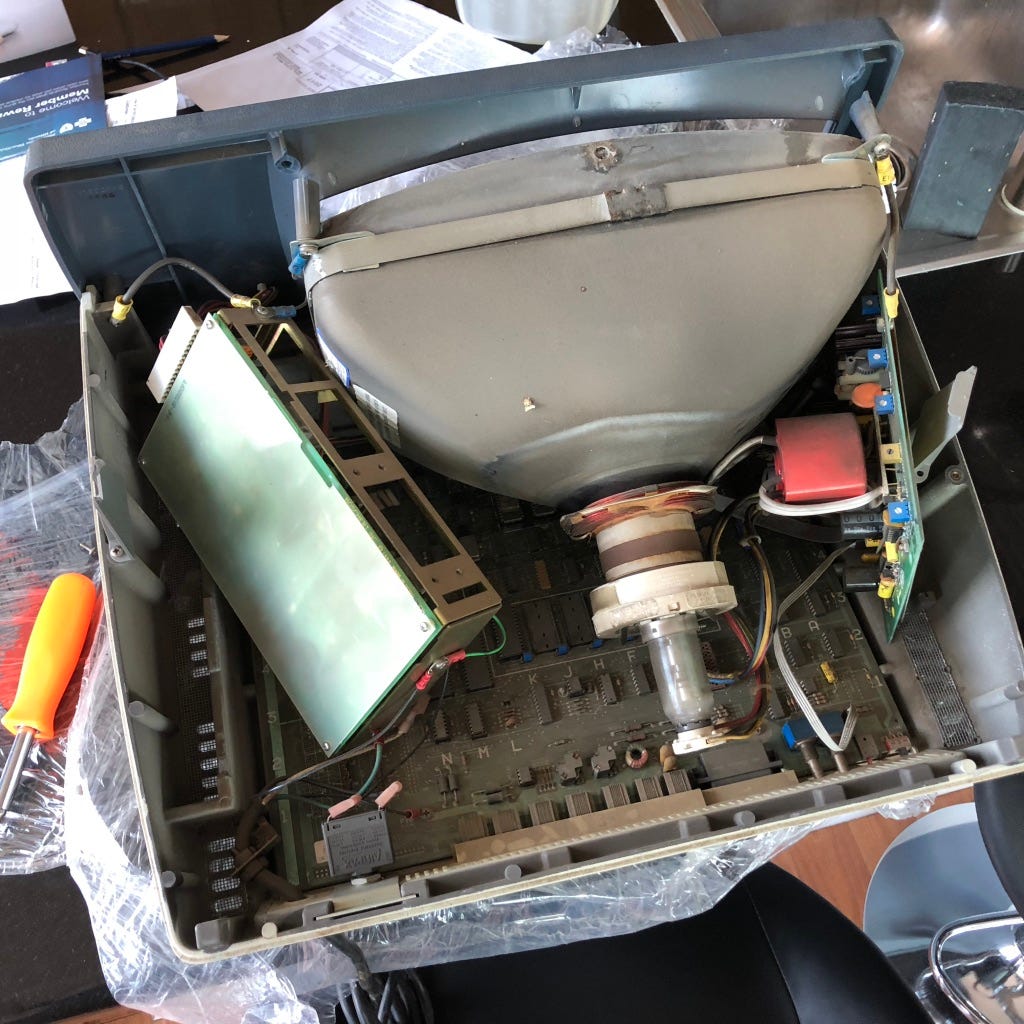
Nearly two weeks later, the machine arrived.
Heartbreakingly, though, it wasn’t packed properly, and the rough treatment in shipping had taken its toll. The posts holding the tube to the top of the case front had snapped, and the retainers holding the power supply and video driver circuitry had broken. Apparently wrapping the outside in saran wrap wasn’t enough to stop all the insides bouncing around.
Although the seller kindly refunded me a percentage of the cost, the damage would cause me additional effort that I hadn’t planned on fixing. That aside, the whole thing looked in slightly better shape than what I’d expected.
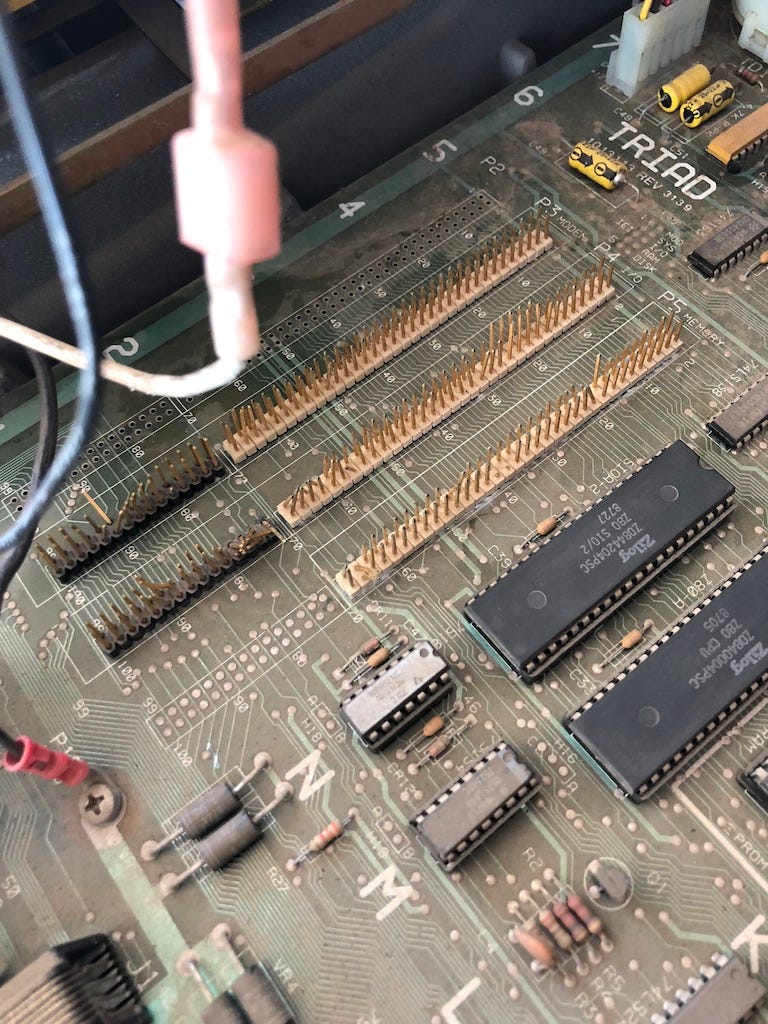
Carefully removing the rogue items, and getting down to the circuit board, I discovered one more problem: the impact of the metal power supply chassis had damaged a bunch of connectors. I was worried that although I might be able to bend the pins back into place, there was risk that they’d suffered enough fatigue that they may later snap in an unpredictable way. They would need to be replaced.
It actually seemed weird that the manufacturer would use male rather than female connectors here.
But let’s take a step back and look at what I’d found. Did this thing have a future? What could I learn from simply looking at the PCB?
Other than how dirty it is, anyway…
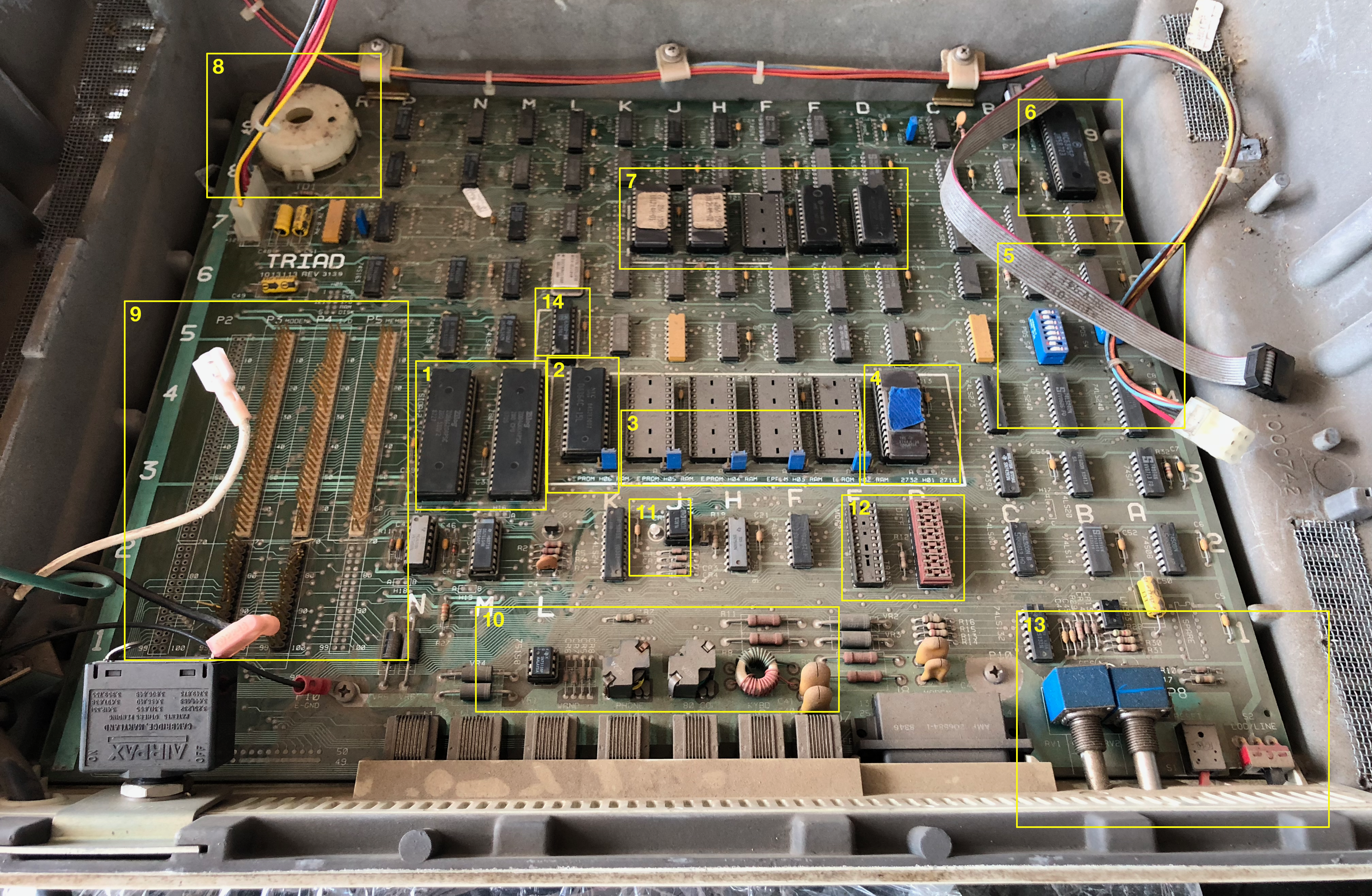
…so after carefully taking pictures of all the connectors and removable hardware, it turns out that there was a lot to be seen!
This machine has a Z80 processor and uses the corresponding Zilog serial I/O processor (1). So this is pretty standard stuff. Although I’d have really liked it to be a 6502 processor, since that’s what I had programmed back in the day, it’s always good to learn new things. There was an old general purpose operating system for the Z80 called CP/M, and Microsoft had a version of BASIC available for it. Perhaps I’ll be able to get these to run eventually?
That’s an 8K RAM chip (2), they were pretty pricey at the time, so this was probably an expensive computer. It looks like it’s highly expandable with a configurable mix of RAM and ROM (3) thanks to that set of blue jumpers at the front. It comes with 8K of program EPROM (4) to start. I wonder what’s on there? Back in the day, EPROMs had a little see through window on top. When exposed to UV light, the data will be erased so that the chip can be reprogrammed. Since the original label covering the window had fallen off, My first job was to put some blue painters tape on top to protect whatever was in there.
You can see some blue DIP switches (5) that are used for configuration, although I’ll probably need to disassemble the EPROM before I can figure out what they do.
Immediately above that, though, there’s a 6845 in a 40-pin package (6). These were pretty common CRT (video) controllers of the day, so hopefully won’t be too hard to understand. Right next to that, there’s some more ROM and RAM (7), and I was guessing that these worked with a bunch of the smaller logic chips to run the display.
In the top left-hand corner, there’s a very grubby piece of plastic (8). Perhaps this is a piezoelectric buzzer? It probably won’t be great quality, but maybe the computer has sound.
Below that we’re back to the sad-face connectors (9). But there are so many of them, and so many pins! Why would anyone add so much expansion capability for a point of sale system? This makes it look more like a general purpose computer. And why is the left-most expansion left as solder pads without a connector installed (I figured this one out just a couple of weeks ago, by the way)?
Probably the little transformers (10) are to do with driving serial communication, but what on earth are those two long dual-in-line package things labeled TRANS and DIFF (12)?, and how is it that a big system like this sports just one LED (11)? I’m going to have to find a way of remedying the LED count, I think. More LEDs = better.
What does LOC/LINE mean (13)? Those two blue potentiometers next to the red momentary (reset?) switch aren’t in great shape, and will need replacing.
Oh, and then there’s the 74LS471 (14). It’s a 256 byte programmable memory (meaning it can be written to once, and then you have to throw it away and start over if you want to make changes). Maybe its some sort of boot monitor ROM?
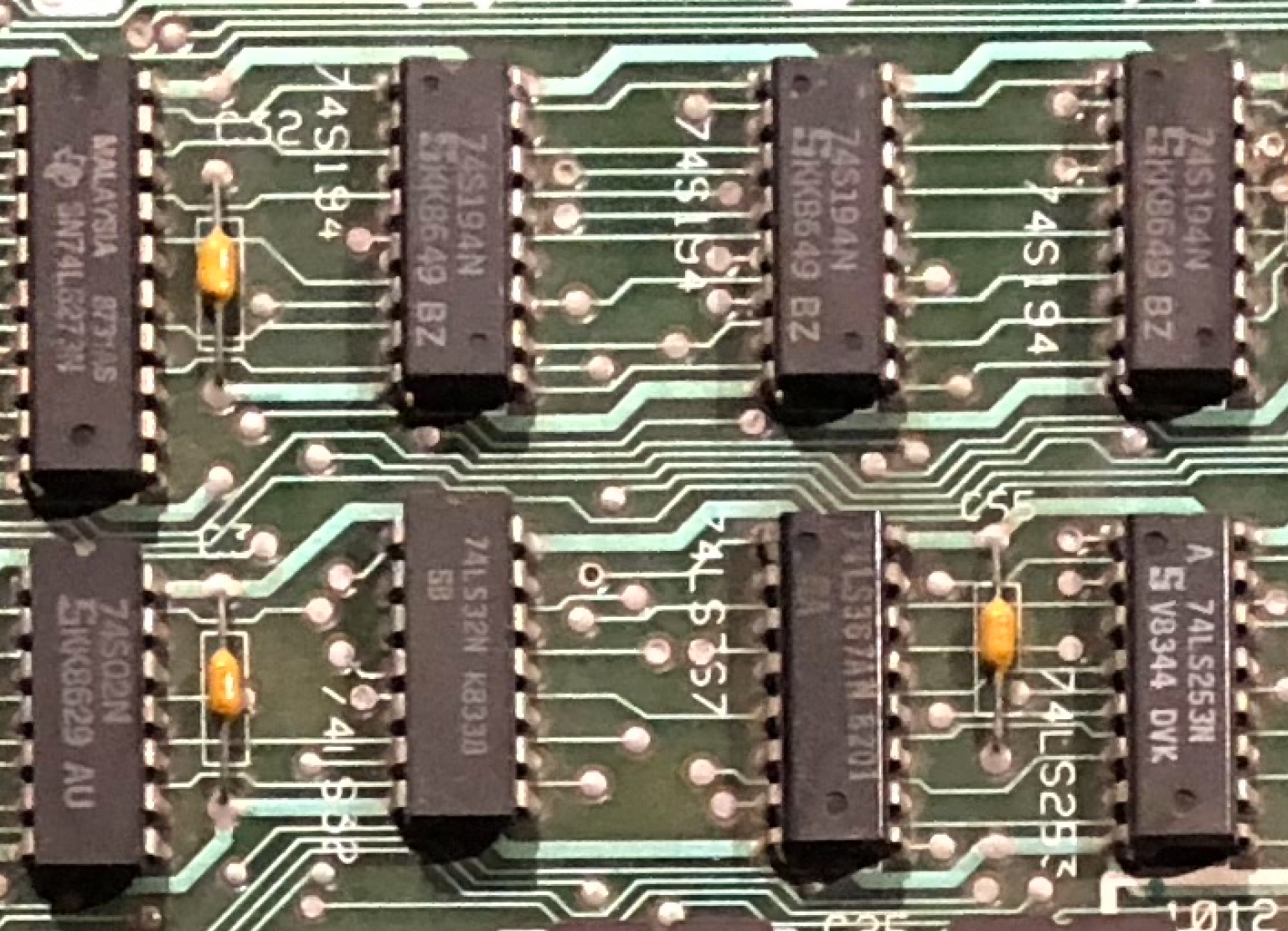
One useful trick I learned a few years ago is that you can usually tell the age of a machine by looking at the date stamp on the various devices. Here you can see a 74LS253 that was manufactured in week 44 of 1983 (V8344). The largest number I saw from causal inspection was from 1987, so probably that’s when this machine was built.
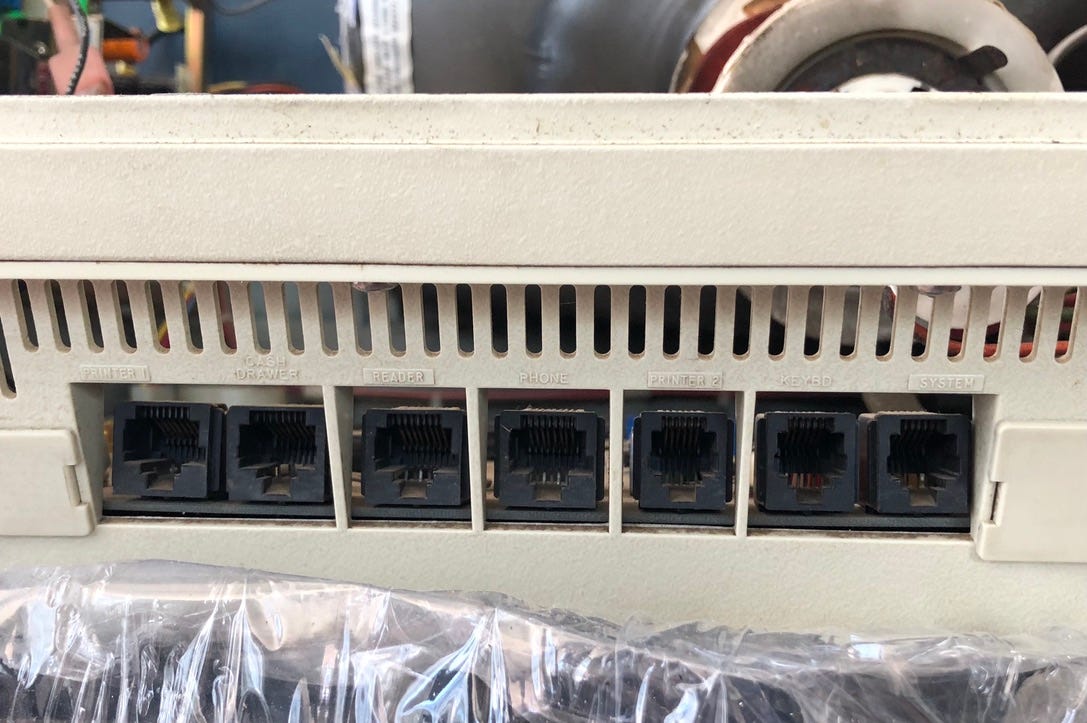
As well as a DB-25 and some strange connector at the edge of the board, there are a bunch of RJ connectors presented at the back. This machine was clearly capable of a lot.
But now I had to clean up the PCB and then replace those damaged connectors… I didn’t want to risk turning the thing on until I was confident that all the short-circuits had been repaired.
But that story is for another time.
More from Alex King on Medium.
This article originally appeared on Medium.